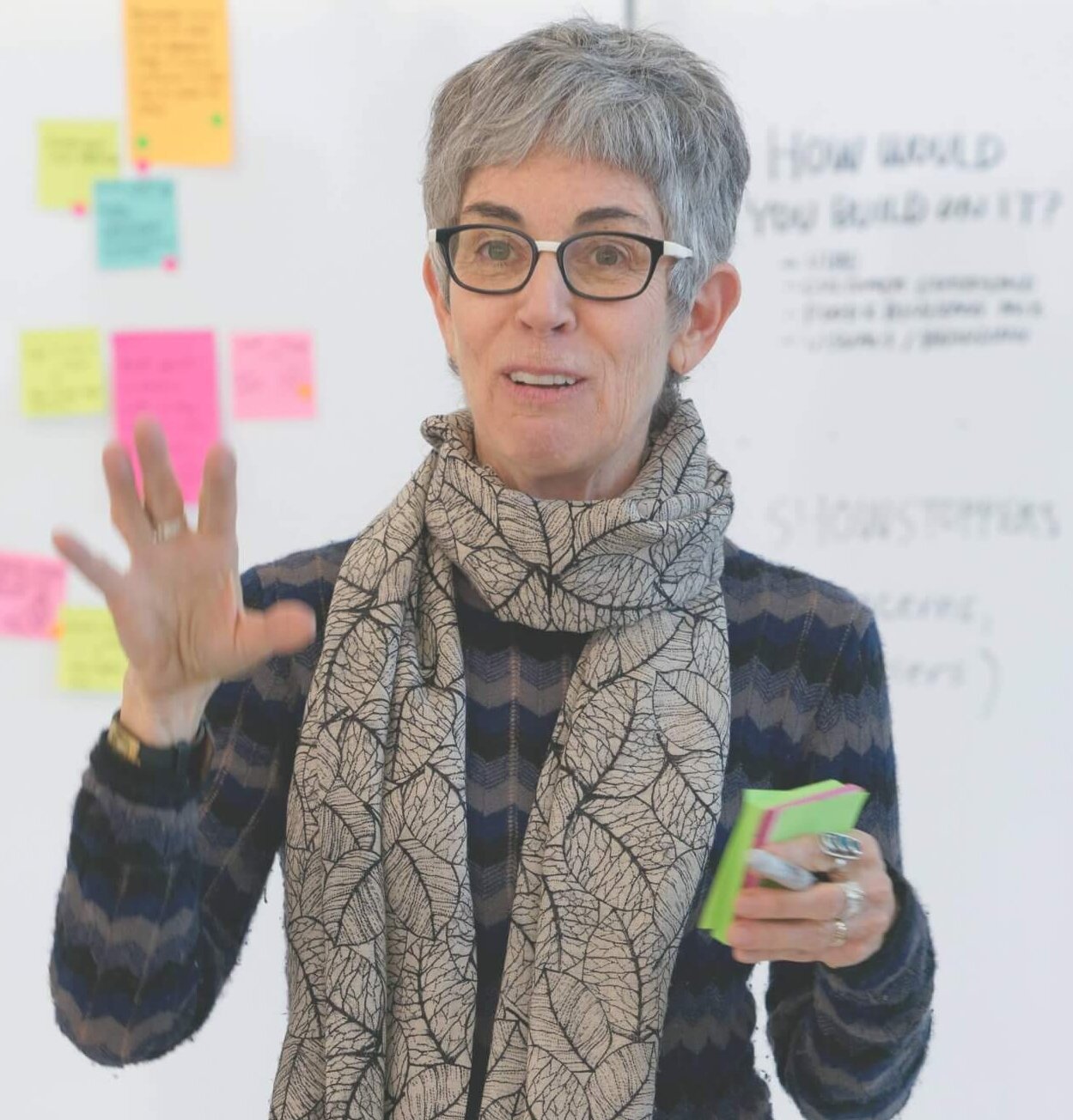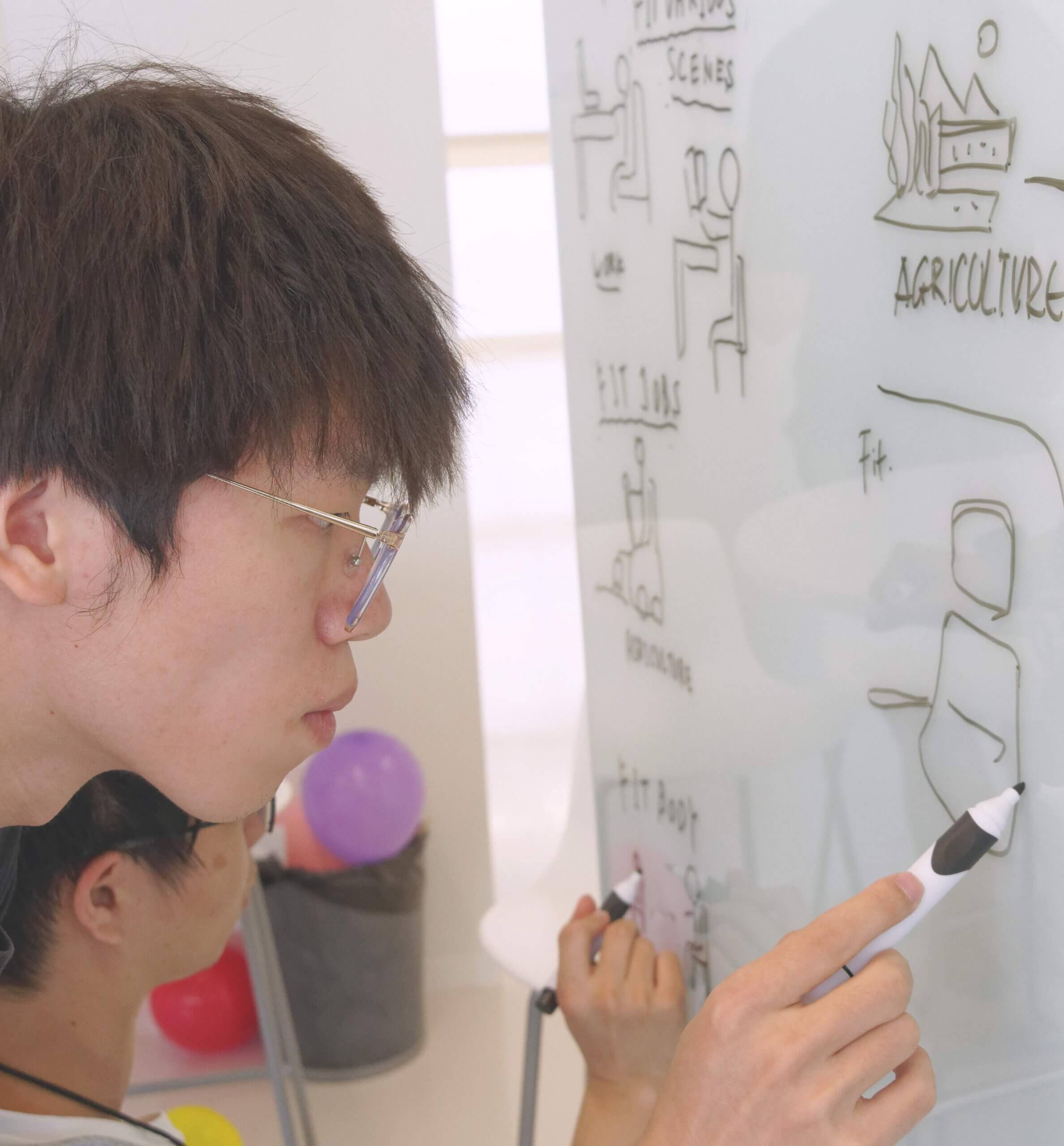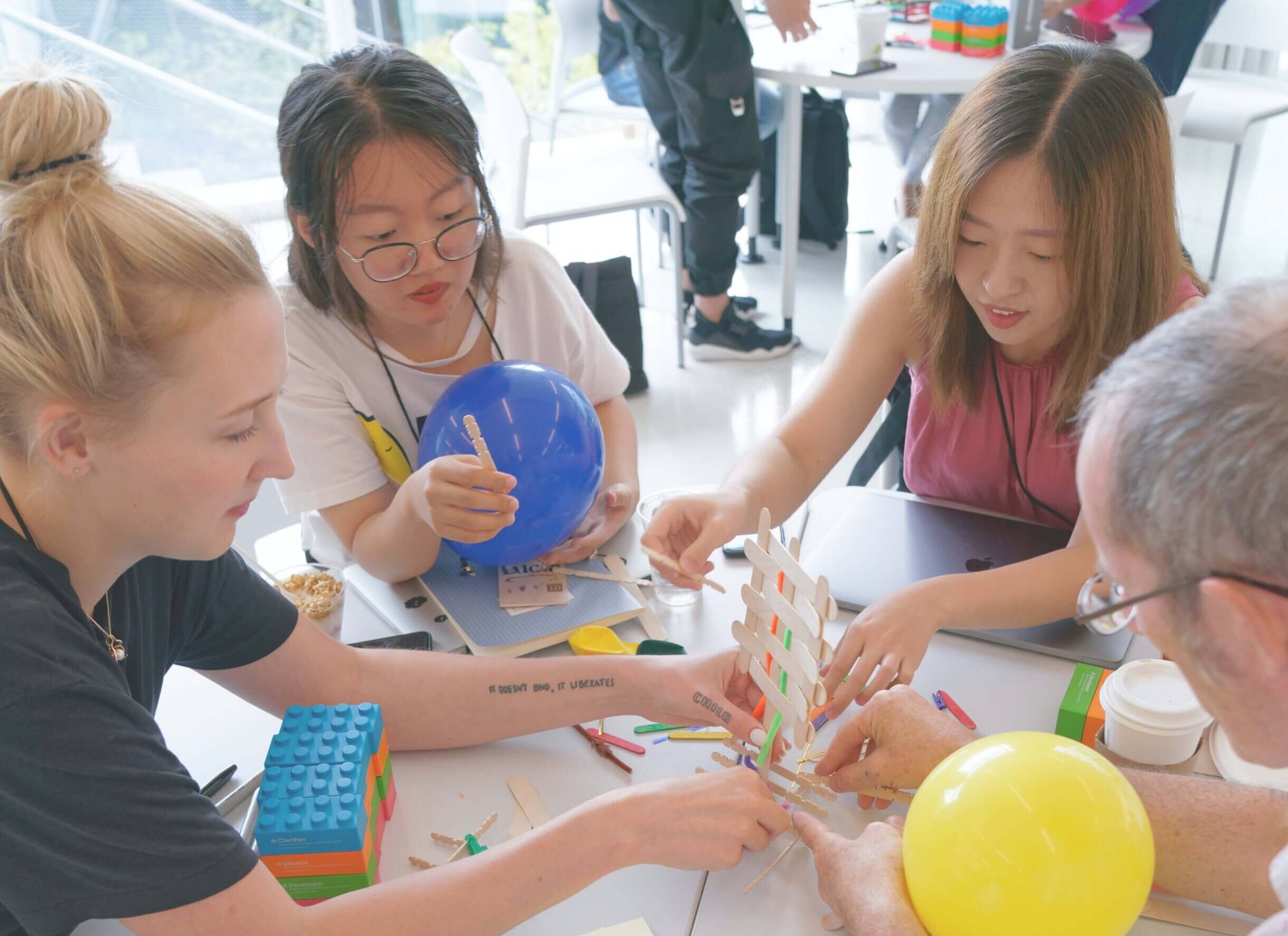Step 3: The Intent-to-Effect Pathway
Step 3: Map Your Pathway From Intent to Effect.
Strategists have come to talk about “design thinking,” with its roots in human-centered design, as a way of reorienting the organization toward customer-centricity, but really every practice within an organization is a way of thinking. Design is thinking, just as strategy is thinking.
We don’t interpret our findings as calls for any expertise to overwhelm any other. As you will see in this report, you don’t need to shift everyone to thinking design (or design thinking) so much as integrate design competencies throughout your organization in order to achieve a desired effect.
Democratize Design in Your Organization
Recharging your internal organization with design practices requires challenging legacy structures. Once you think in terms of truly leveraging design within your organization, you will be able to build and produce the responsive ecosystems of information, products, and services that support the curated and customized continuous experiences demanded by all of us—colleagues and customers alike— as the digital distinction continues to dissolve.
Today, with so much evidence to support the added value that design brings, design is closer than it’s ever been to playing a strategic, stewarding leadership role within organizations. With the rise of the Chief Design Officer and companies positioning themselves as “design-led,” design has the ear of executives and other key decision makers.
Yet design often remains a misunderstood and under-leveraged asset of organization. It is fractured in both its execution and its identity. At the root of the problem is definition and accountability. Design needs to be clearly responsible for a function within the organization.

Call for an organizational “design function.”
Currently, design functions within most organizations as a separate, disconnected activity. Depending on how design mature an organization is, design can play many different roles—aesthetic, functional, strategic, cultural. In most current organizational structures, however, design does not take responsibility for a function the way that other departments (operations, finance, marketing, engineering, etc.) do. As a result, design’s value and place within the organization are sometimes questioned (and hard to measure).
The call to action becomes clear. In order for design to lead in integrating its competencies throughout the organization, at a time when organizations need these competencies more than ever, the design industry and its practitioners must be willing to:
- Lead a unique and valued function within the organization’s structure.
- Be fully accountable for that function’s outcomes.
- Demonstrate empathy internally, for the rest of the organization, in addition to external audiences and users.
Today all organizational functions—and the roles within them—are being held to higher and stricter accountability requirements. This situation is a result of organizational moves toward data-driven performance measurement models, and design is no exception.
Think—and work—to progress from Intent to Effect.
According to Lead with Purpose respondents, there is currently a great opportunity to lead an organization on the pathway from intent (strategic vision) to realizing that intent both within the organization and outward to the broader world (effect).
As one respondent noted, “the connection of strategy to execution is where we fall down, and frankly a lot. There are huge gaps between all the strategy and thinking and then the ability for the organization to execute on it.”

If design can define the Intent-to-Effect Pathway, the organizational function of design will need to take on more dimension.
Leading the Intent-to-Effect Pathway means following a new map and taking design into new territory. Design practitioners, especially those skilled in the methods of strategic design (design methods, human-centered design, etc.), have been lamenting for years that they want to have a strategic voice in the organization—a seat at the table. Designers have long believed (perhaps arrogantly) that they, rather than business-trained professionals, are best equipped to create and lead the strategy function of organizations.
Our research indicates that designers are not currently viewed as competent to lead strategy. Typically they don’t have the business acumen. This is not to say that designers do not have an important role to play in strategic leadership. They certainly do. Design at this moment is best suited to play a role in facilitating a given strategy, however. Design should not be in any silos, and design roles should be in constant touch with the Intent-to-Effect Pathway. The strategic role of design is clear: design should be bridging silos and departments, demonstrating and advocating for the Intent-to-Effect Pathway at all times.
Framing the Future of Your Organization

Take responsibility for the Intent-to-Effect Pathway.
Let’s consider the function of strategy for a moment. For strategy to succeed in propelling an organization forward it needs to be both (a) envisioned (intent) and (b) realized (effect).
(a) Intent: this is what our interviewees believe should be left to business professionals who rely on multiple sources (including design) to help inform their planning.
(b) Effect: more specifically, interviewees agree that addressing the gap that exists in translating abstract, visionary ideas (intent) into concrete, tangible outcomes is the real opportunity for design to make an impact.
How Design Moves the Organization From Intent to Effect
An organization’s strategic functions determine where it needs to play.
By definition, an organization’s vision is a concept; it’s not without substance, but it still lacks the details to become a reality. Where can an organization look for those critical details?
Defining and facilitating the Intent-to-Effect Pathway is where design excels. More specifically, six design skills come together to chart the way. Of course the following six skills are not the only ones that designers must possess in order to be accountable for this “gap-closing” function—the roles dedicated to defining the Intent-to-Effect Pathway. Nor are these steps within the Intent-to-Effect Pathway one and done. They are iterative in nature and applied purposefully at various points along the way.
RELATED: 6 Core Skills to Help You Progress from Intent to Effect



